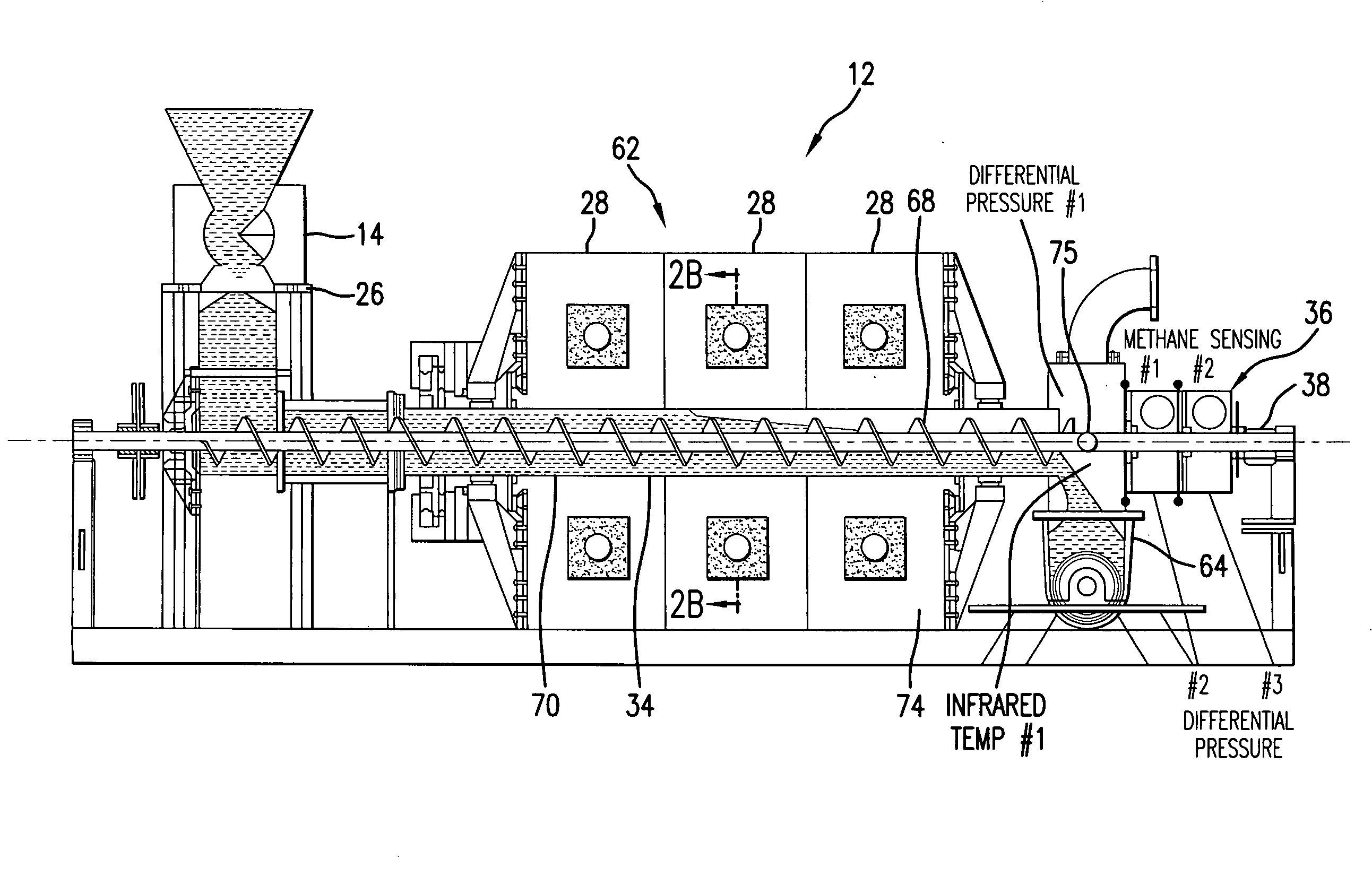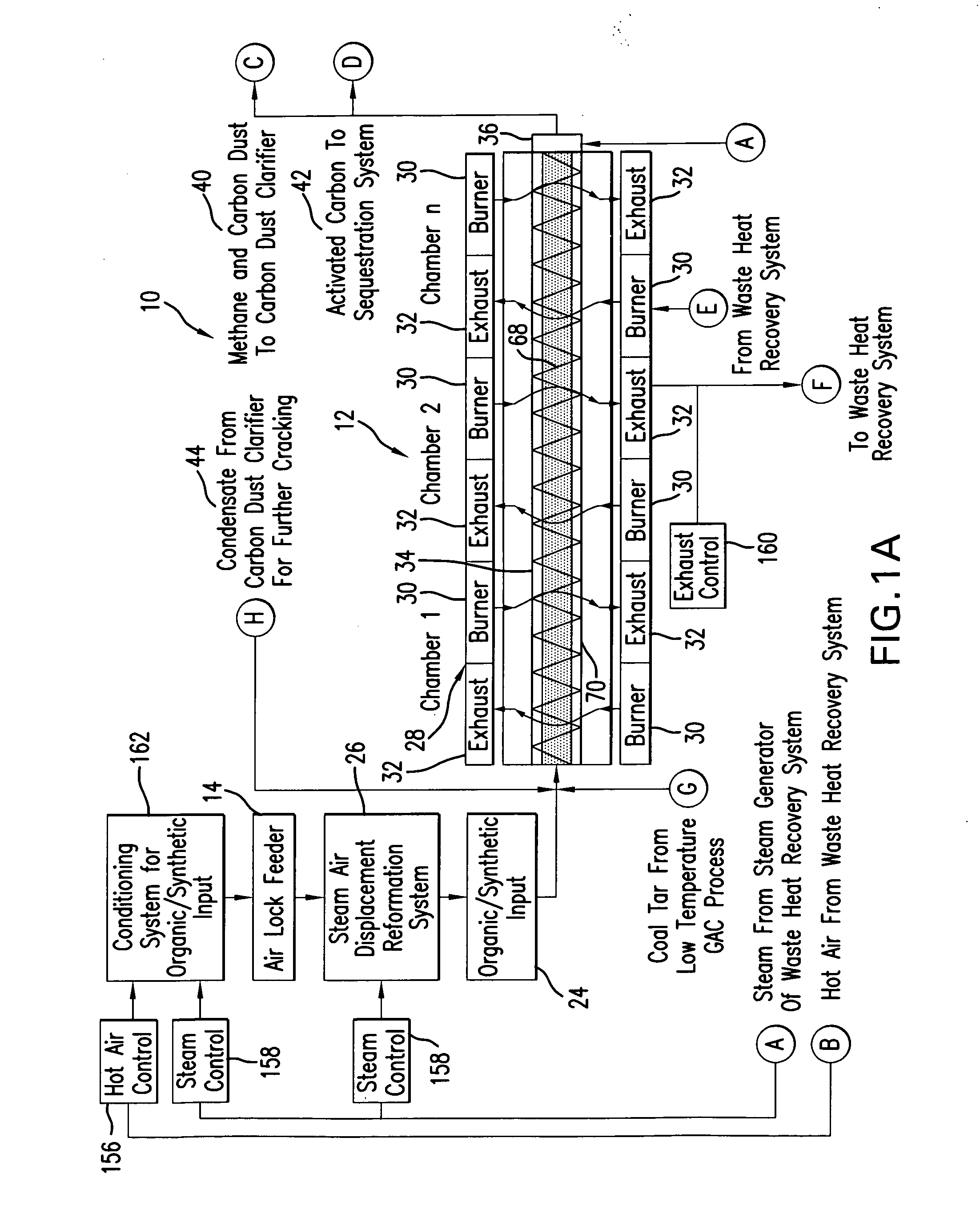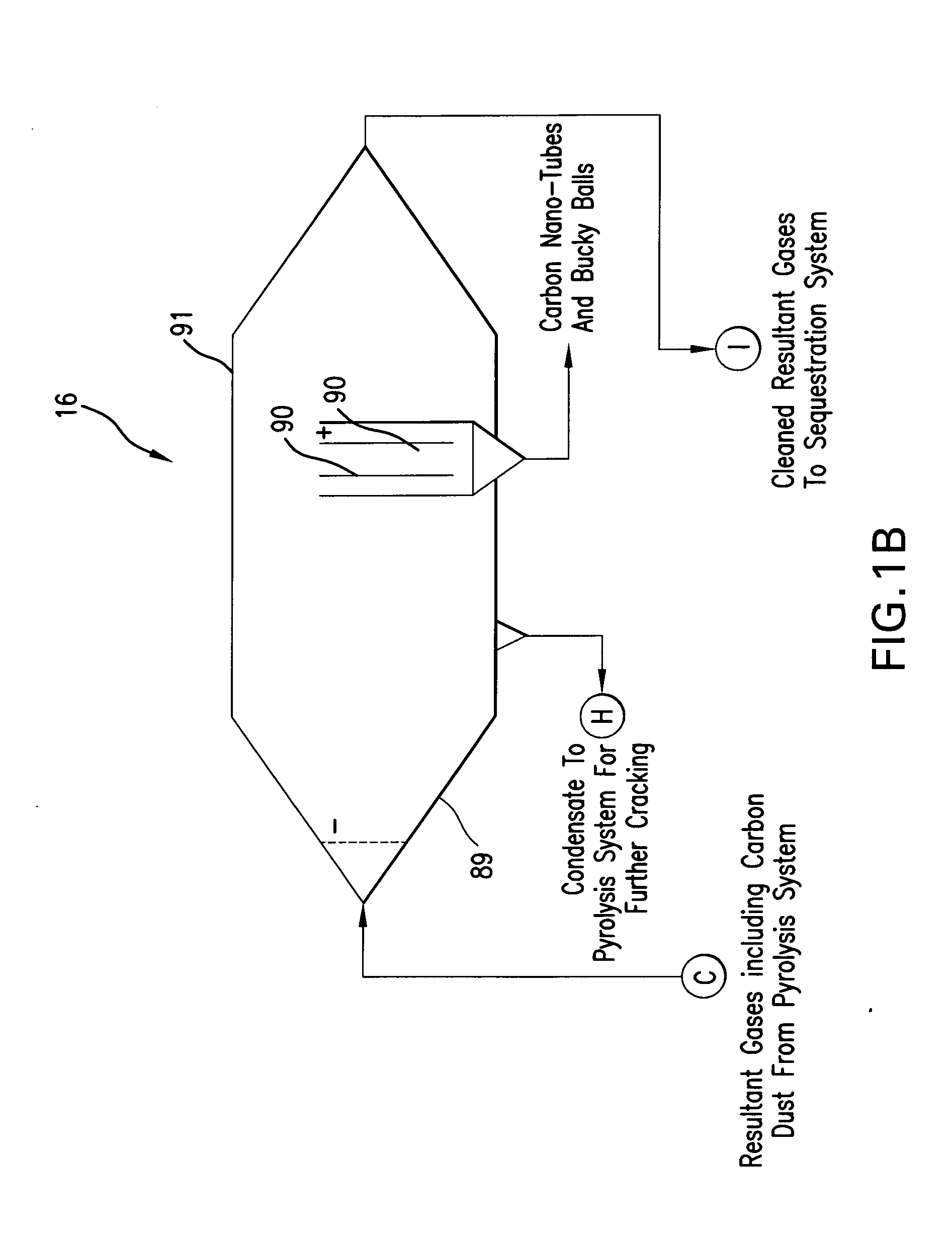Pyrolysis Systems, Methods, and Resultants Derived Therefrom
a technology of pyrolysis systems and resultants, applied in the field of pyrolysis systems and methods, can solve the problems of limiting the range of feedstocks that prior art pyrolysis systems could process, affecting the performance of communication systems, and long time-consuming, and achieves the effect of easy conformation and without undesired degradation of communication system performan
- Summary
- Abstract
- Description
- Claims
- Application Information
AI Technical Summary
Benefits of technology
Problems solved by technology
Method used
Image
Examples
Embodiment Construction
[0032]FIGS. 1A-1F are schematic diagrams showing components of a combined cycle carbonaceous feedstock conversion system 10 according to an embodiment of the present invention. The system 10 includes a high-temperature pyrolysis unit 12 that receives carbonaceous feedstock via an airlock feeder 14 and produces a gas product containing methane and a solids product containing activated carbon or non-activated carbon, depending upon the type of feedstock. The system 10 further includes a dust clarifier 16 for collecting carbon nanostructures from the gas and a series of filtering units 18 for removing noxious components from the gas using activated carbon from the pyrolysis unit. Also shown in FIGS. 1A-1F are an optional low-temperature batch distillation system 20 and a low-temperature granulated activated carbon (GAC) system 22 that are operated using waste heat from the high-temperature pyrolysis unit 12.
[0033]In use, organic or synthetic feedstock 24 is introduced to the system thr...
PUM
| Property | Measurement | Unit |
|---|---|---|
| temperatures | aaaaa | aaaaa |
| temperatures | aaaaa | aaaaa |
| temperatures | aaaaa | aaaaa |
Abstract
Description
Claims
Application Information
 Login to View More
Login to View More - R&D
- Intellectual Property
- Life Sciences
- Materials
- Tech Scout
- Unparalleled Data Quality
- Higher Quality Content
- 60% Fewer Hallucinations
Browse by: Latest US Patents, China's latest patents, Technical Efficacy Thesaurus, Application Domain, Technology Topic, Popular Technical Reports.
© 2025 PatSnap. All rights reserved.Legal|Privacy policy|Modern Slavery Act Transparency Statement|Sitemap|About US| Contact US: help@patsnap.com



